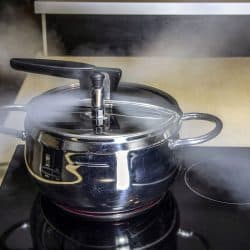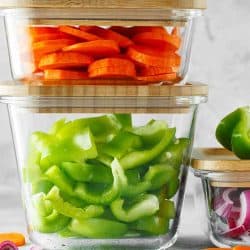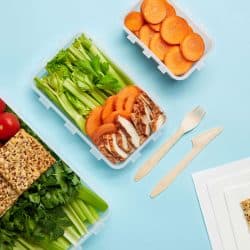There are several reasons why you may want to seal a plastic food container. Maybe you are starting a gourmet food business or want to store food safely after the seal has been broken. This post will discuss some hacks and tricks that can be used to seal plastic food containers with tools you may already have in your home. We will also discuss professional tools you can purchase to make sealing easier for long term food storage or your personal business.
There are several ways you can seal plastic food containers. Here are some ideas, tricks, and tips.
- Induction seal - requires a machine.
- Re-purpose a plastic water bottle to reseal plastic bags
- Use a heated knife to reseal a plastic bag.
- Use an iron to seal or reseal aluminum foil to plastic.
These are some methods for sealing plastic containers. Most of them involve using heat to make the seal, except for the plastic water bottle method. We will discuss how to complete all of these methods and what tools you need. You may have everything you need in your home already. Keep reading to find out more about plastic containers, including why they are used and how long they can be used.
![Healthy food for kids concepts: well balanced school lunch box shot on blue table. School supplies are around the lunch box, How To Seal Plastic Food Containers [4 Cool Tricks!]](https://kitchenseer.com/wp-content/uploads/2020/12/How-To-Seal-Plastic-Food-Containers-4-Cool-Tricks.png)
How Do You Seal Plastic Food Containers?
Some of these methods will work for plastic bags, while other methods are for harder plastic containers. Here we will give details about each method and what you need to complete the seal.
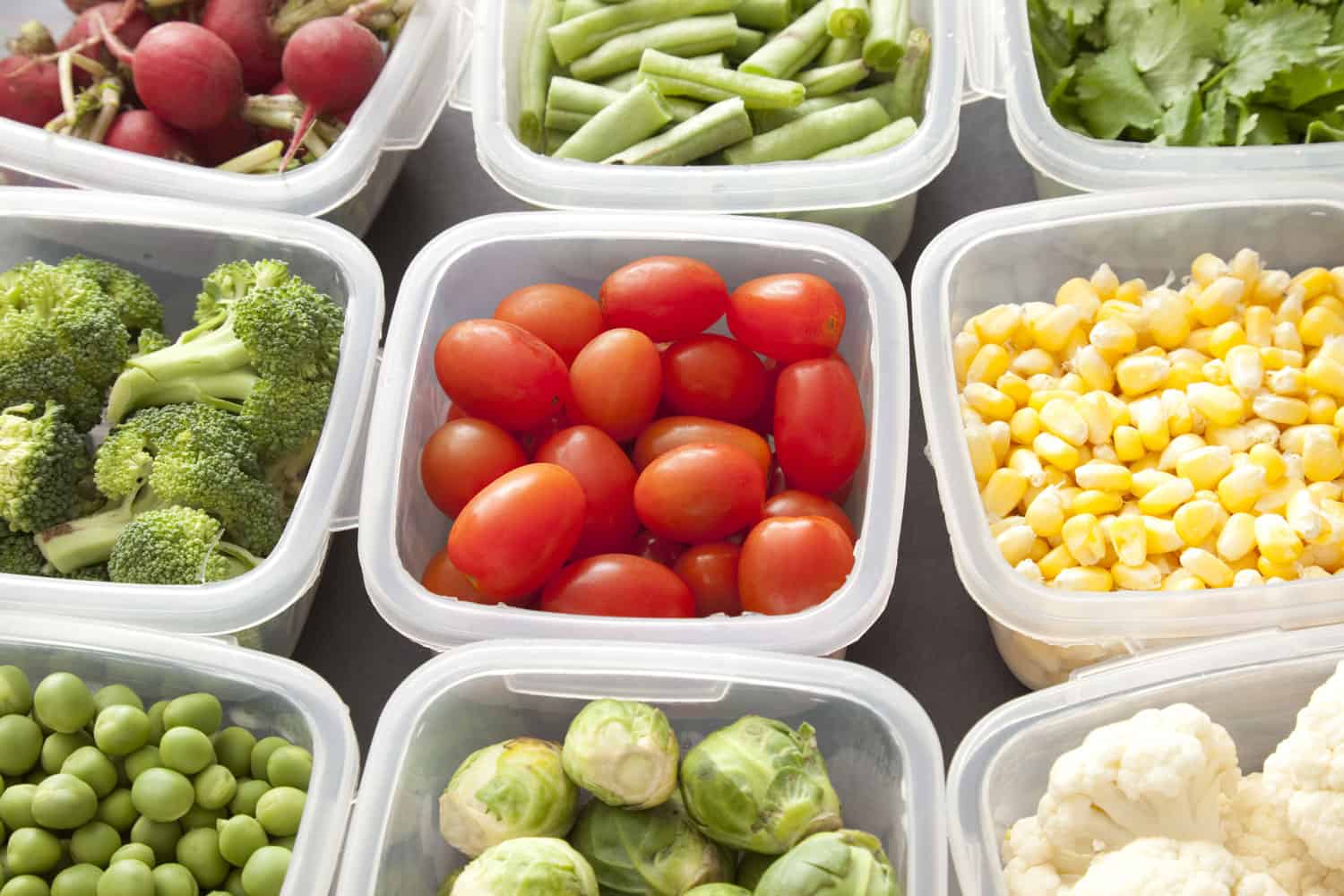
Induction Seal
This method is for hard plastic containers and will not work for plastic bags. This requires an induction machine and will create a professional seal that is the best option for a gourmet food business. The machine works. You need to have caps or tops with seals on the inside of the cap. Twist the cap onto the container. Place the induction sealer over the top of the cap, and within seconds the seal is placed on the container.
Induction Sealer For Tamper Resistant Seals
Click here to buy this Induction Sealer from Amazon.
Repurposed Water Bottle
This only works to seal plastic bags. First, cut a plastic water bottle in half horizontally. Retain the top part of the water bottle with the cap. Take off the cap. Feed the top of the plastic bag through the water bottle drinking spout and fold over. Remove any excess air in the bag. Put the cap back on the bottle to create a seal.
Use An Iron
An iron can be used to seal aluminum foil to plastic. This method works for plastic bags or containers. Foods like yogurt come with a foil lid to maintain freshness. If you have a foil lid, then you can reuse it. Otherwise, you can use your own aluminum foil from your kitchen. Place the foil over the opening of the container and run the iron around the edge. The iron should only touch the foil and never directly touch the plastic.
If you are sealing a plastic bag, then the first step is folding a piece of aluminum foil on both sides of the opening. Remove any excess air before using the iron. Run the iron on the edges of the foil without touching the plastic to create a seal.
Sunbeam 1200 Watt Iron
Click here to buy Sunbeam 1200 Watt Iron from Amazon.
Use A Heated Knife
This method works to seal plastic bags. Heat a knife with a lighter. You may use a butter knife or a sharper knife as long as you have a cutting board. Remove any excess air before sealing. After heating the knife for about 20 seconds, use the knife to cut a straight line horizontally to remove the bag's top. This will create a seal at the point of the cut.
Why Is Food Stored In A Plastic Container?
Plastic is non-reactive like most kitchenware, and plastic is the cheapest of the non-reactive materials. Copper, aluminum, and cast iron are all reactive, which means the food may taste metallic as compounds are leached from the material into your food. Acidic foods like tomatoes, citrus, and vinegar should only be cooked with non-reactive materials. Plastic containers are great for storage but do not put hot food into plastic containers. Many plastics contain BPA and other compounds that can leach into the food when heated.
While plastic is the easiest for stacking in your cupboards and the cheapest to buy, you should read about the benefits of other food storage containers. There are pros and cons to each storage material. It depends on how you will be using the containers. Will you be storing things in the fridge, freezer, or cupboard? Will you be storing acidic food in these containers? For more information about the best containers for food storage, read this post Is It Better To Store Food In Plastic, Glass, Or Stainless Steel?
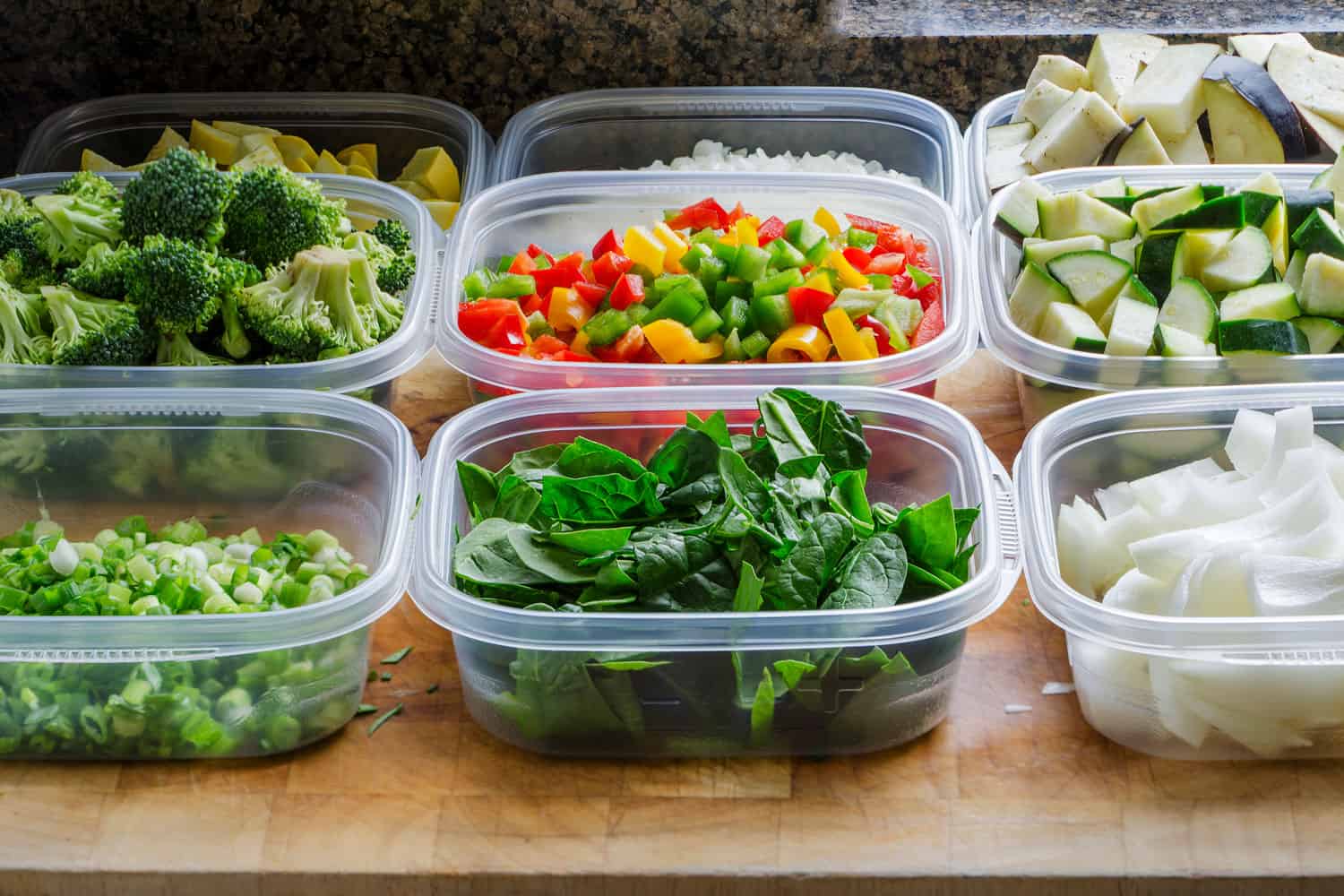
Do Airtight Containers Keep Bugs Out?
Using airtight containers will keep bugs out of your food. This includes the smallest and most frequent kitchen pests, like weevils, moths, mites, and fruit flies. If you happen to find bugs in your airtight container, there is a problem. One possibility is that the lid is not completely sealed properly. The other possibility is that microscopic eggs were already in your food before you moved it to an airtight container.
What Plastic Is Safe For Food Storage?
Plastic has a number system to designate what chemicals are used in processing. The FDA approves plastic numbers 1, 2, 4, 5, and 7 for food contact. Plastic numbers 3 and 6 are not approved for food contact from the FDA. While there are five options of food-safe plastic, according to the FDA, three are always considered safe. The best plastic to buy for food storage will be numbers 2, 4, and 5. Plastic number 7 may contain BPA, which can leach into your food in small amounts. The FDA finds that it is not enough to be deemed harmful and still considers it safe for food contact.
Food Storage Containers With Lids
Click here to buy Food Storage Containers from Amazon.
How Long Should You Keep Plastic Containers?
If you buy storage containers, look at the manufacturer guidelines for replacement. Ziploc plastic containers have a lifespan of 5 to 10 years. You may wish to reuse plastic containers from your grocery purchases, like butter, whipped cream, or another product. While it can be safe to reuse some of these containers, many are not meant to be reused. If the container is plastic number 2, 4, or 5, it is safe to reuse. All other numbers of plastic are not safe for reuse. Look for signs of wear and stains on your plastic containers to determine if you should replace them.
Are Ziploc Bags Airtight?
Ziploc bags create a tight seal, but they are not airtight. The grooves snap into place, but there are minuscule gaps between the grooves that allow air to come in through time. You can increase Ziploc bags' efficiency by removing all of the air out of the bag before you seal it. One trick is to completely zip the bag, except for the last 1/2 inch. Then submerge the bag filled with food into a bowl of cold water. Make sure to keep the opening above the water, so no water seeps into the bag. This trick removes the last bit of air from the bag so that you can seal it the rest of the way. Read more about using Ziploc bags for food storage on this post Are Ziploc Bags Airtight? [And how to make them so]
Ziploc Storage Bags With Grip And Seal
Click here to buy Ziploc bags from Amazon.
In Closing
![Healthy food for kids concepts: well balanced school lunch box shot on blue table. School supplies are around the lunch box, How To Seal Plastic Food Containers [4 Cool Tricks!]](https://kitchenseer.com/wp-content/uploads/2020/12/Healthy-food-for-kids-concepts-well-balanced-school-lunch-box-shot-on-blue-table.-School-supplies-are-around-the-lunch-box.jpg)
Plastic food containers can be sealed in a variety of ways. You can get an induction sealer that creates a professional, gourmet presentation. You can use your clothing iron and aluminum foil to create a tight seal. Another option is to heat a knife with a lighter and cut the plastic bag to make a seal. Plastic containers are often used for food storage because it is cheap and nonreactive. Plastic codes 2, 4, and 5 are the safest food storage options, but the FDA also deems 1 and 7 to be safe for food contact.





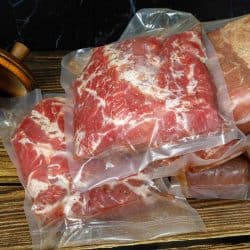
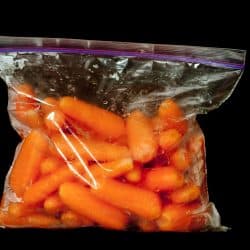
![A bundle of dill inside a Ziploc bag, Are Ziploc Bags Airtight? [And how to make them so]](https://kitchenseer.com/wp-content/uploads/2020/07/A-bundle-of-dill-sealed-inside-a-ziploc-bag-250x250.jpg)
